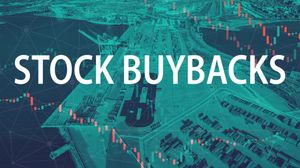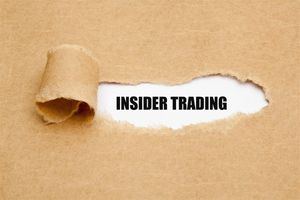
Hexcel Corporation (NYSE: HXL), a global leader in advanced composites technology, has announced a regular quarterly cash dividend of $0.17 per share on its common stock. This declaration, made by the company's Board of Directors, signals a continued commitment to returning value to shareholders and underscores a perception of financial stability within the advanced composites and specialized industrial sectors. The dividend is scheduled to be paid on November 10, 2025, to shareholders of record as of the close of business on November 3, 2025.
For investors, this consistent dividend payout from a key player in critical industrial supply chains often serves as a reassuring indicator of robust cash flow generation and prudent financial management. While the immediate market reaction can see a slight uptick in demand for the stock leading up to the ex-dividend date, the broader implications extend to how Hexcel positions itself within an evolving market landscape, balancing shareholder returns with strategic growth and operational resilience.
Hexcel's Latest Dividend: A Deep Dive into the Details and Market Context
Hexcel's Board of Directors officially declared the $0.17 per share dividend, maintaining its consistent payout strategy. Shareholders who are recorded as owners of HXL stock by November 3, 2025, will be eligible for this payment. Typically, the ex-dividend date precedes the record date by one to two business days; thus, investors purchasing shares on or after approximately October 31, 2025, would not be entitled to this specific dividend. The actual cash distribution will occur on November 10, 2025. This routine declaration is part of Hexcel's established capital allocation strategy, which has historically included regular quarterly dividends, with the company boasting a track record of increasing dividends for three consecutive years.
This dividend declaration comes at a time when Hexcel recently reported its third-quarter 2025 results. While the company's sales were noted as relatively flat year-over-year, Hexcel also revised its 2025 sales and earnings per share (EPS) guidance downwards. Factors such as tariffs, inflationary pressures, and destocking within its supply chain were cited as contributors to this revised outlook. Despite these headwinds, the continued commitment to a steady dividend payout can be interpreted by the market as a strong signal of management's confidence in the company's underlying financial health and long-term prospects. It suggests that even amidst challenging operational environments, Hexcel is generating sufficient free cash flow to reward its shareholders.
The initial market reaction to such a declaration, particularly from a company with a history of consistent dividends, is generally positive. Income-focused investors are often drawn to stocks that provide a reliable stream of income, thereby increasing demand for Hexcel shares in the short term, especially as the ex-dividend date approaches. However, on the ex-dividend date itself, the stock price typically adjusts downwards by an amount roughly equivalent to the dividend per share, reflecting the fact that new buyers are no longer entitled to the upcoming payment. This is a normal market mechanism and not necessarily indicative of a negative shift in the company's fundamentals.
Analyzing the Impact: Who Wins and Who Loses?
The declaration of a regular quarterly dividend by Hexcel (NYSE: HXL) creates clear implications for various stakeholders, primarily benefiting its existing shareholder base, particularly those focused on income generation. For these investors, the $0.17 per share dividend represents a tangible return on their investment, providing a consistent income stream. It reinforces Hexcel's appeal as a stable, mature company capable of distributing a portion of its earnings, even when navigating broader economic challenges. The company's payout ratio, often hovering between 58% and 63%, suggests a balance between returning capital to shareholders and retaining earnings for reinvestment in growth initiatives or to bolster financial reserves.
Conversely, while not a "loss" in the traditional sense, investors solely focused on aggressive growth might view consistent dividends as a sign that a company is prioritizing shareholder returns over potentially higher-risk, higher-reward growth opportunities. However, for a company like Hexcel, operating in the capital-intensive advanced composites sector, a balanced approach often signals prudent management. The dividend might also subtly pressure competitors in the advanced composites and specialized industrial sectors to evaluate their own capital allocation strategies. If Hexcel's dividend consistency enhances its attractiveness to investors, rival firms might feel compelled to demonstrate similar financial stability or offer alternative compelling value propositions to maintain investor interest.
From a broader industry perspective, Hexcel's financial stability, as evidenced by its dividend, is generally positive for its ecosystem. Customers relying on Hexcel's advanced materials, particularly in the aerospace and defense industries, benefit from a financially sound supplier. This reduces supply chain risk and fosters confidence in the long-term availability and innovation of critical components. While suppliers to Hexcel may not directly "win" from the dividend, the underlying profitability and cash flow that enable such payouts mean Hexcel remains a reliable and solvent customer, contributing to a healthy supply chain environment.
Wider Significance: Navigating Industry Trends and Future Outlook
Hexcel's consistent dividend declaration fits squarely within broader industry trends emphasizing shareholder returns, particularly for established companies in mature or consolidating sectors. The advanced composites market, while innovative, often requires significant capital expenditure and has long development cycles, especially in aerospace and defense. A stable dividend from a key player like Hexcel (NYSE: HXL) signals confidence in the long-term demand for its products, despite short-term fluctuations. This confidence can ripple through the entire supply chain, bolstering sentiment among other manufacturers, suppliers, and even smaller, innovative startups within the composites ecosystem.
The event also has potential ripple effects on competitors such as Toray Industries (TYO: 3402) or Solvay (EBR: SOLB), who also operate in similar advanced materials markets. While each company has its own capital allocation strategy, Hexcel's commitment to dividends might influence how investors perceive the financial health and shareholder-friendliness of its peers. Companies that can consistently return capital to shareholders, even during periods of revised guidance or economic uncertainty, often gain a reputation for stability, which can attract a broader base of investors. This can subtly pressure competitors to demonstrate similar financial resilience or articulate clear alternative strategies for shareholder value creation.
Regulatory and policy implications, while not directly tied to a dividend declaration itself, form the backdrop against which Hexcel operates. Factors such as global trade policies, tariffs (which Hexcel cited in its revised guidance), and environmental regulations impacting manufacturing processes or material sourcing can all influence a company's profitability and, by extension, its ability to sustain dividends. Hexcel's ability to maintain its dividend despite these external pressures suggests a degree of operational efficiency and market strength. Historically, consistent dividend payers in the industrial sector are often viewed as bellwethers for economic stability, and Hexcel's ongoing payout aligns with this tradition, offering a sense of normalcy in potentially volatile markets.
What Comes Next: Strategic Implications and Market Opportunities
Looking ahead, the immediate short-term focus for Hexcel (NYSE: HXL) investors will be the ex-dividend date around October 31, 2025, and the payment date on November 10, 2025. Beyond these dates, the market will closely scrutinize Hexcel's upcoming earnings reports for further insights into its financial health, particularly how it navigates the previously mentioned challenges of tariffs, inflation, and destocking. The sustainability of the dividend will be directly tied to the company's ability to generate consistent free cash flow and maintain profitability in its core aerospace, defense, and industrial segments. Any significant shifts in these operational metrics could prompt questions about future dividend policy.
In the long term, Hexcel's dividend strategy is an integral part of its broader capital allocation framework. While returning capital to shareholders, the company must also continue to invest in research and development, expand production capacities, and potentially pursue strategic acquisitions to maintain its competitive edge in advanced composites. The balance between these priorities will define Hexcel's growth trajectory and its ability to continue delivering shareholder value. Potential strategic pivots could involve further diversification into new end markets beyond traditional aerospace, or a deeper focus on sustainable composite solutions, which could open new market opportunities.
Market opportunities for Hexcel are likely to emerge from continued growth in commercial aerospace, particularly with new aircraft programs and increasing demand for fuel-efficient materials. The defense sector also offers stable demand for advanced composites. Challenges will include intense competition, raw material price volatility, and the need for continuous innovation to stay ahead. Investors should watch for Hexcel's strategic responses to these dynamics, including any new product launches, significant contract wins, or changes in its operational footprint. The company's ability to effectively manage its cost structure while capitalizing on these opportunities will be crucial for its sustained financial performance and dividend consistency.
Comprehensive Wrap-up: A Signal of Stability in a Dynamic Market
Hexcel's (NYSE: HXL) declaration of a $0.17 per share quarterly cash dividend is a significant event that reinforces the company's commitment to its shareholders and provides a clear signal of its perceived financial stability. The key takeaway is that despite facing headwinds such as flat sales, tariffs, inflation, and destocking, Hexcel's management is confident enough in its cash flow generation and long-term outlook to maintain its consistent dividend payout. This acts as a reassuring anchor for investors, particularly those seeking reliable income streams in the advanced composites and specialized industrial sectors.
Moving forward, the market will likely assess Hexcel through a dual lens: its operational performance in a dynamic global economy and its continued dedication to shareholder returns. While the dividend provides a floor for investor confidence, the company's ability to grow revenues, manage costs, and innovate will ultimately dictate its long-term stock performance. Investors should watch for Hexcel's upcoming earnings calls for detailed insights into its strategic initiatives and how it plans to navigate the evolving demands of the aerospace, defense, and industrial markets.
Ultimately, Hexcel's latest dividend declaration highlights the enduring value proposition of established industrial leaders. It suggests that even in complex market environments, companies with strong fundamentals and a clear capital allocation strategy can continue to reward their investors. The lasting impact of this event will be measured not just by the immediate cash distribution, but by how Hexcel leverages its financial stability to drive future growth and innovation, ensuring its continued leadership in advanced materials.
This content is intended for informational purposes only and is not financial advice








